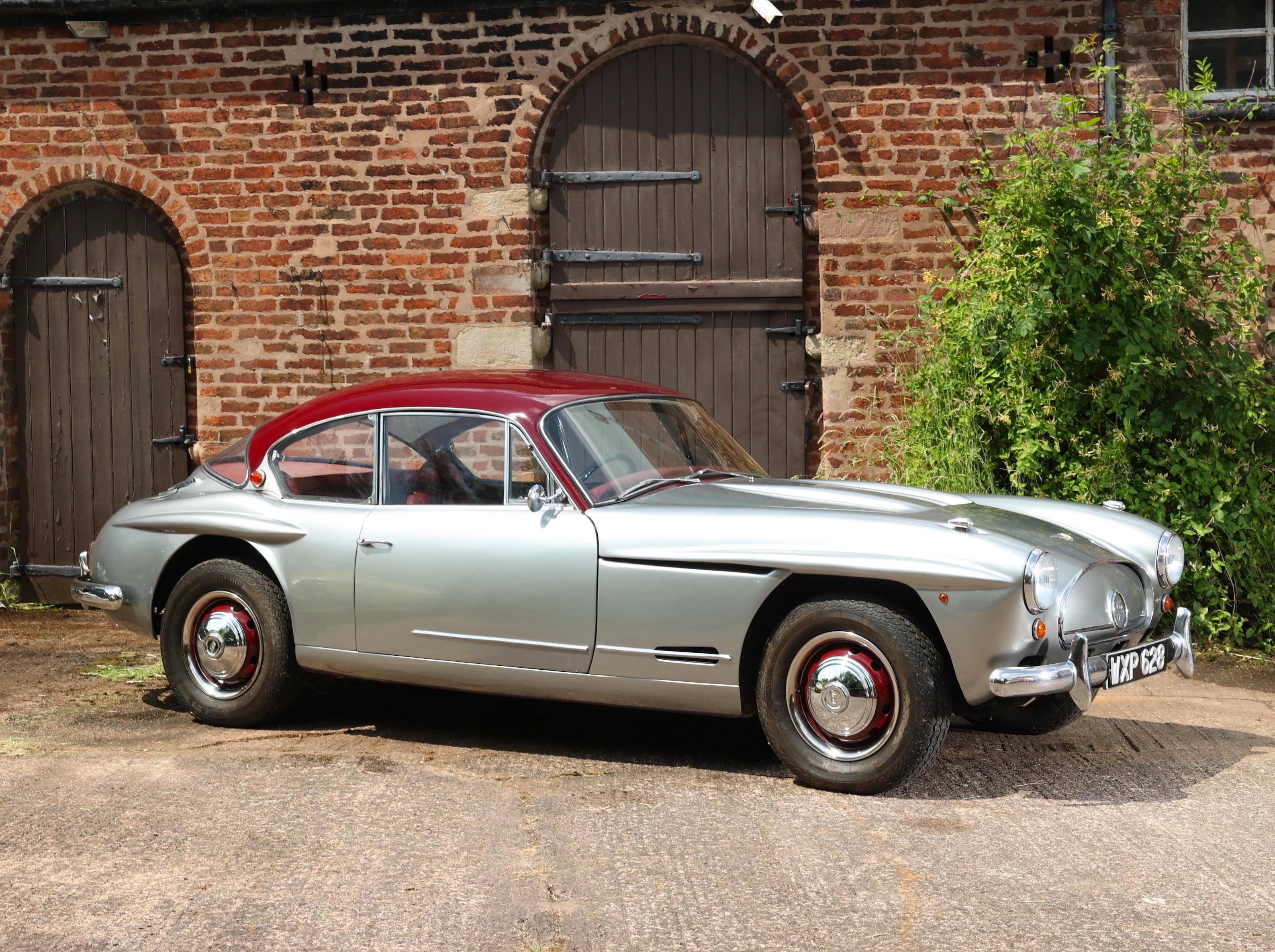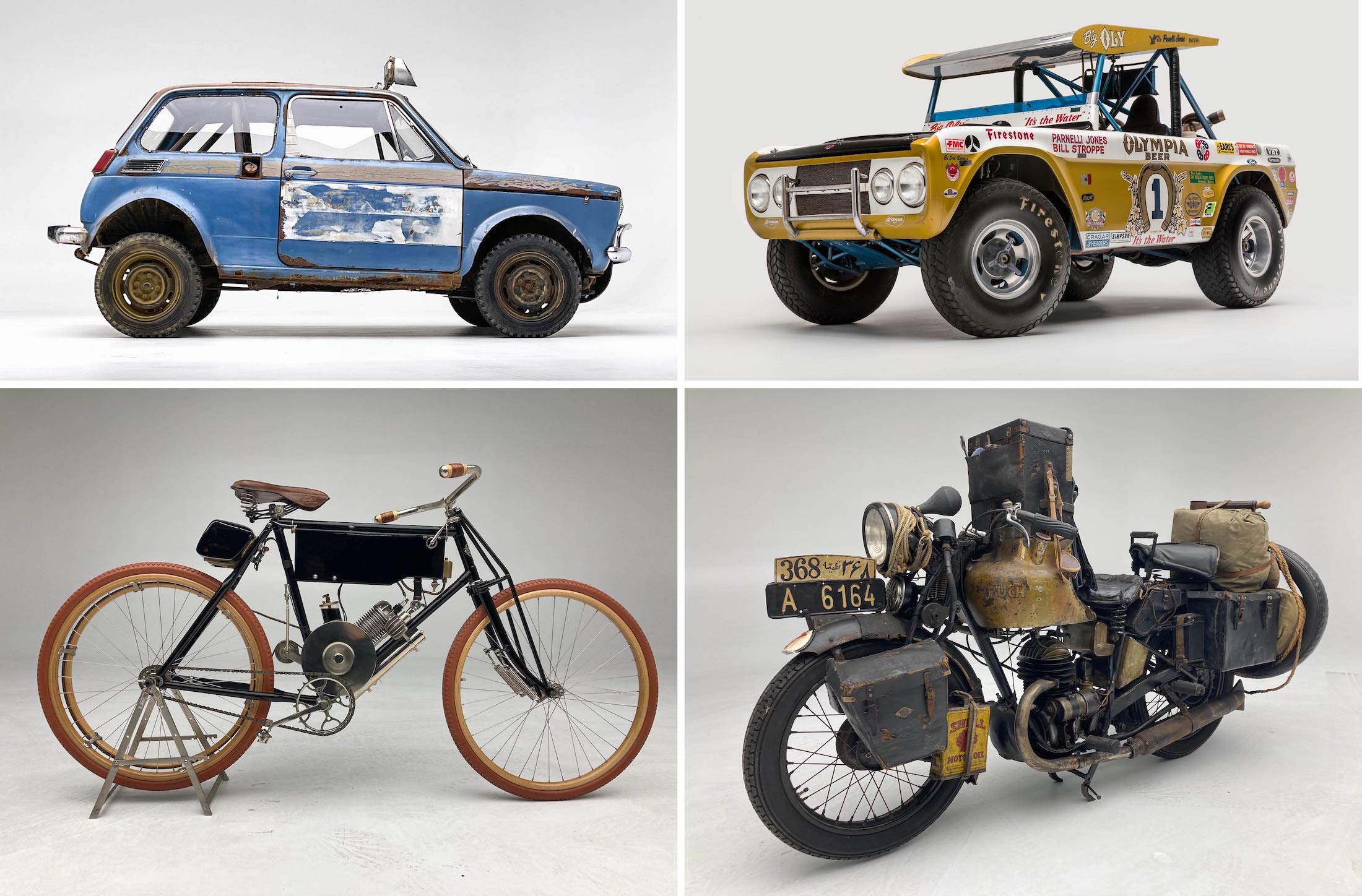









(via Fiat 131 Abarth Rally Stradale – The Car That Won The World Rally Championship 3 Times)
from Tumblr https://somar78.tumblr.com/post/656609984818364416
This is the Jensen 541R and if you’ve never seen one before that’s probably because just 193 of them were made between 1957 and 1960, and very few were exported out of Britain.
The elegant design of the 541 series of Jensens has been winning them fans for over half a century now, the most popular feature is the front grill covering which can be raised or lowered by the driver from inside the car.
Over the course of the company’s history, Jensen built everything from trucks to advanced all-wheel drive sports cars. The 541R was built during Jensen’s booming post-WWII period, and it was one of the first British cars with a composite body (fiberglass).
✱ The Jensen 541 was first shown to the public in 1953 as a prototype, the model number stands for 1954, 1st car.
✱ Sales of the first 541 started in 1954 and the model was sold over three major generations between 1954 and 1963 – the 541, 541R, and 541S.
✱ The Jensen 541 was one of the fastest four seat cars in the world when it was introduced, with a top speed of over 115 mph.
✱ In 1956 the 541 Deluxe was fitted with Dunlop disc brakes front and rear as standard, the first British four seat automobile to offer them.
The Jensen 541R was the new and upgraded version of the Jensen 541 introduced in 1957. Like its forebear the 541R had a steel chassis, a lightweight fiberglass body, independent front suspension, a live axle rear, and it was powered by the 4.0 liter straight-six engine from the Austin Sheerline.
Above Image: The grill can be opened and closed by the driver from his seat inside the car, this unusual feature wouldn’t make it to the next car in the 541 model line.
The 541 was designed by Eric Neale using contemporary design cues with perhaps a little inspiration from the Mercedes-Benz 300 SL. Period magazine reviews of the 541R and its siblings were typically glowing, the cars were fast, they handled well, and the interiors were luxurious with leather upholstery, front bucket seats, and plenty of trunk space.
Jensen Motors wasn’t a big automobile marque and as a result it turned out far fewer cars than many of its fellow manufacturers. The company had originally started out when brothers Alan and Richard Jensen began designing and building car bodies for chassis made by other companies, like Austin and Wolseley.
By the mid-1930s they had made quite a name for themselves, in 1934 they were commissioned by American A-list movie star Clark Gable to design and build a car for him based on a Ford V8 chassis. This design won them accolades on both sides of the Atlantic and resulted in a deal with Ford to produce a run of Jensen-Fords with Jensen bodywork on a Ford chassis.
In 1939 all of this was interrupted by the outbreak of the Second World War, the Jensen factory turned to making equipment for the war effort, including tank turrets as well as specialised ambulances and fire engines.
After the war they returned to their true passion, automobile manufacturing. The first post-WWII car from Jensen was the Jensen PW, followed by the first Jensen Interceptor – not related to the later Jensen Interceptors introduced in the 1960s.
This is the point at which the first Jensen 541 first appeared, it shocked much of the British motoring establishment with its use of a new state-of-the-art material called “fiberglass” which allowed for the quick created of complex car bodies using just a mould.
Above Image: The interior was very well appointed by the standards of the era, with leather upholstery, plush carpeting, and a well appointed dashboard.
With its 4.0 liter straight-six producing 150 hp at 4,100 rpm and 210 lb ft of torque it could reach a top speed of 127.5 mph, that’s over 205 km/h, a remarkable feat for a car in the late 1950s with seating for four adults.
It’s not known exactly how many examples of the Jensen 541 remain, there are owners clubs that do a great job of cataloguing the surviving cars and helping owners to network and source parts.
The 541R you see here is from the penultimate year of production for the model, 1959, and it was given a full restoration in 2010. It’s presenting today in good shape throughout however it hasn’t been driven since 2017 and so recommissioning is recommended prior to returning the car to active use.
This car was originally supplied new by Charles Follet Ltd finished in silver with a burgundy roof and a burgundy leather interior, with burgundy steel wheels to match.
It’s due to roll across the auction block with Bonhams on the 17th of July with a price guide of £45,000 to £ 55,000, which works out to approximately $62,250 to $76,100 USD. If you’d like to read more or register to bid you can click here to visit the listing.
Images courtesy of Bonhams

The post The Jensen 541R: A Rare British GT Classic appeared first on Silodrome.
The all-new ADV:Overland kicked off at the beginning of July at the Petersen Automotive Museum, it’s made up of 23 machines including record-setting motorcycles, Hollywood sci-fi vehicles, and spacecraft models on loan from NASA’s Jet Propulsion Laboratory (JPL).
“This exciting, first-ever collection of Round-the-World, overland racing, and off-world overland vehicles is the perfect pandemic escape hatch. Most of these extraordinary machines have never been publicly displayed, and absolutely radiate the spirit of adventure: some even retain their original accessories, 90 years later. These are must-see vehicles, on display in the best motoring museum on the planet.” – Paul d’Orléans, ADV:Overland Exhibit Curator
Above Image: This 1969 Honda N600 Baja that was Honda’s first factory race car in the USA.
Motorcycles on display include an example of the 1903 California that was the first motorized vehicle to travel coast to coast; a 1912 Henderson Four as used in the first motorcycle trip around the world; a 1915 Harley-Davidson 11-F with sidecar as used by Effie and Avie Hotchkiss became the first women to drive across the United States; the 1932 Douglas “Mastiff” which inspired Robert Edison Fulton Jr.’s novel “One Man Caravan”; the 1933 Puch 250SL that was the first motor vehicle to overland from Europe to India; and a 1964 Honda CL72 Baja Scrambler homage to Dave Ekins’ first timed run down Baja.
Off-road racing vehicles on display include the 1969 Ford Bronco “Big Oly” in which Parnelli Jones dominated Baja racing in the 1970s; a 1906/2019 Contal Mototri veteran of the Peking to Paris rally, and the 1969 Honda N600 Baja that was Honda’s first factory race car in the USA.
Adventure motorcycles in the exhibit will include a 1974 BMW R60/6 which inspired the book “Lone Rider” by Elspeth Beard; a 2021 Harley-Davidson Pan America; a 2007 KTM 690 Rally Factory ridden and raced around the world by Lyndon Poskitt; a 2019 Harley-Davidson Livewire from the “Long Way Up” television series; a 1948 Indian 348 Chief and 1962 Harley-Davidson Panhead Chopper ridden round the world by ‘RTW Doug’; a 2002 BMW 1150GS around the world bike, and the 1966 Triumph T120 that won the Baja 1000.
Above Image: This is the 1969 Ford Bronco “Big Oly” in which Parnelli Jones dominated Baja racing in the 1970s
Real and imaginary space vehicles on display include a 2021 Tardigrade concept electric Lunar motorcycle; a replica of the 1965 chariot from the “Lost in Space” television series; a chariot from the 2018 remake of the “Lost in Space” television series; a model of the Opportunity MER-1 rover, the robotic spacecraft that holds the long-distance record in off-world overlanding, and a model of the 1996 Sojourner rover.
This exhibit is a collaboration between the Petersen Automotive Museum and the Motorcycle Arts Foundation, and it’s curated by Paul d’Orléans of The Vintagent – a name you’re almost certainly already familiar with.
The Petersen Museum is located at 6060 Wilshire Blvd. (at Fairfax) in Los Angeles, California and tickets are available either at the museum or in advance courtesy of this link.
Images courtesy of The Petersen Automotive Museum

The post ADV:Overland At The Petersen Museum – Curated By Paul d’Orléans appeared first on Silodrome.